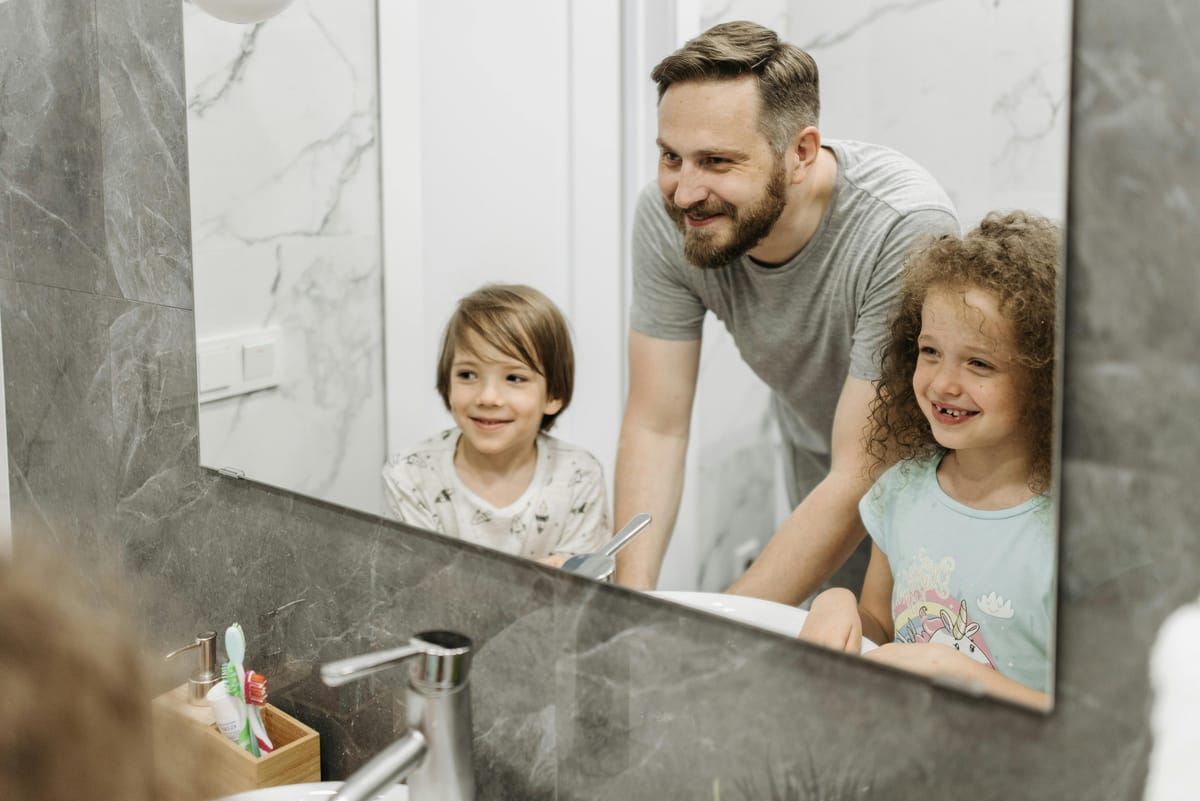Mirror, Mirror: Am I the Friend I Want My Child to Be?

We all want our children to grow up with good friends, peers who are kind, trustworthy, and caring. But the surprising truth is, long before your child has their first school bestie, they are learning what friendship looks like by watching you.
Your friendships, your social circle, and even how you handle disagreements with adults in your life quietly teach your child what it means to trust, connect, and repair relationships. The question for every parent is this: Am I modeling the kind of friend I hope my child will become? Am I modeling the attitude I want my child to develop?
Why Modeling Matters
Children are natural observers. They pay more attention to what we do than what we say. Decades of research in social learning theory confirm that children adopt behaviours modeled by adults in their lives, especially parents¹.
That means the way you talk about your friends, how you prioritize connection, and even how you handle conflicts—all of it becomes your child’s invisible classroom.
It is also important to realise that our children are also watching how we participate in the community. Research shows that children develop stronger social skills and a sense of belonging when they see parents engaged in supportive friendships and community networks². In other words, your adult relationships are not separate from parenting; they are part of it.
The Car Ride Comments
You pick up your child from school, and while driving home, you call a friend on speakerphone. During the conversation, you share a few frustrations, complaining about another friend who “never calls back” or joking about someone being “so unreliable.”
Your child sits quietly in the back seat, but don’t be fooled; ears are wide open. Later, when a classmate doesn’t share a toy, your child calls them “unreliable” in the same tone you used.
Now, a different car scenario. You answer your friend’s call and say: “Hey, I missed you. I know life gets busy, but I’m glad we’re catching up today.” Instead of criticizing, you express understanding. Your child learns a different lesson: friendships involve patience, trust, understanding, and forgiveness.
The car ride is ordinary for you. But for your child, it is a classroom in learning loyalty, patience, empathy, and how to speak about people they care about, and generally.
The Broken Plan Repair
Another example. You and your child are supposed to meet friends for a Saturday park playdate, but your friend cancels at the last minute. Frustrated, you tell your child, “They always do this. I’m not bothering anymore.”
Your child learns that when plans fall through, friendships end.
But what if you take another approach? Instead, you say: “I feel disappointed, but sometimes things happen. I’ll check in with them later to see if they’re okay. Maybe we can reschedule.”
This small shift teaches resilience and repair. Your child sees that friendship is not about perfection, but about concern, understanding, compromise, and graciousness. Later, when they face bumps in their own friendships, they will model your behavior, working through it, not walking away.
Trust, Connection, and Repair
Every parent wants their child to form healthy, lasting friendships with three key qualities: Trust, Connection, and Repair. The beauty is that none of this requires a special “lesson.” Simply living with awareness, being intentional with your words, actions, reactions, and showing care in your own friendships does the teaching.
Parents’ Social Circle
Your friendships also shape your child’s sense of community. If your social circle is supportive, warm, and welcoming, your child learns that community is a safe, helpful, and rewarding place. It is much more than just frivolous activities. When they see you volunteering, checking in on a neighbours, or planning a feeding-the-homeless activity with friends, they absorb the idea that relationships extend beyond family walls.
Children who experience this grow up knowing that friendship is not only about playdates or parties, but also about belonging and giving as well as receiving.
Practical Tips
So, how can you intentionally model the kind of friend you want your child to be? Here are a few small but powerful practices:
- Speak kindly about friends, even when they’re not around.
- Show commitment by keeping promises and being reliable.
- Normalize repair by apologizing and making amends when needed.
- Value connection by setting aside time for friendships and community involvement.
It’s not about being perfect; it’s about showing your child that friendship, like any relationship, needs care and attention.
Family Activity
Here is: “Friendship Reflection Jar” for the whole family:
- Place a jar and slips of paper in a common area.
- Once a week, each family member writes down one way they were a good friend or noticed someone else being one. (For younger kids, you can help them draw a picture.)
- At the end of the week, read the slips together. Celebrate the ways trust, connection, and repair showed up in your family and friendships.
This simple practice not only reinforces positive social norms but also opens the door for children to share their own budding friendship stories.
Finally, our children do not learn how to be good friends from textbooks; they learn from us. The way we build, maintain, and repair our own relationships becomes the blueprint for theirs. By practicing awareness and intentionality in our friendships, we are not just shaping our adult lives; we are also shaping the kind of friend and community member our children will grow up to be. Modeling is a powerful tool!
So, consider the question: Are you the friend you want your child to be?
References
¹ Bandura, A. (1977). Social learning theory. Englewood Cliffs, NJ: Prentice Hall.
² Barry, C. M., & Wentzel, K. R. (2006). Friend influence on prosocial behavior: The role of motivational factors and friendship characteristics. Developmental Psychology, 42(1), 153–163.